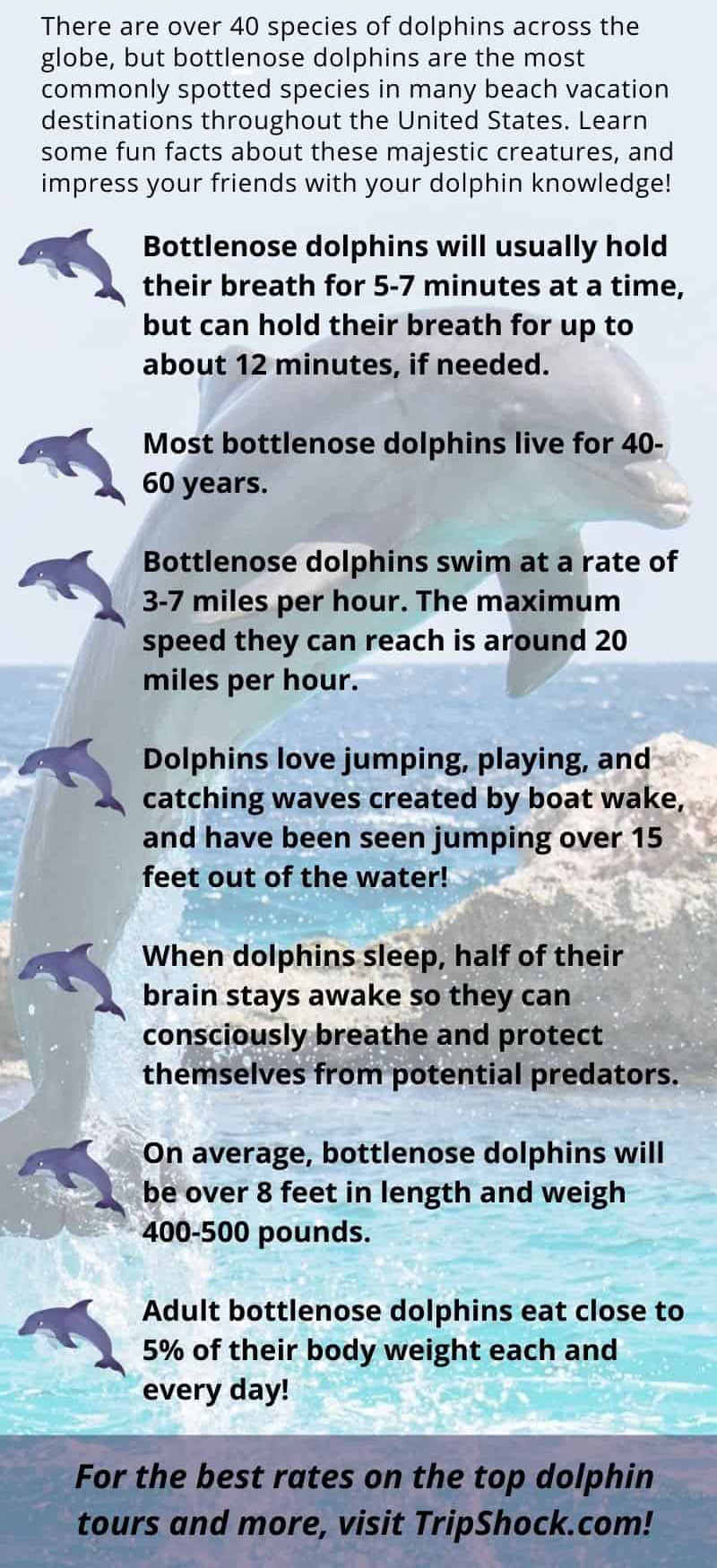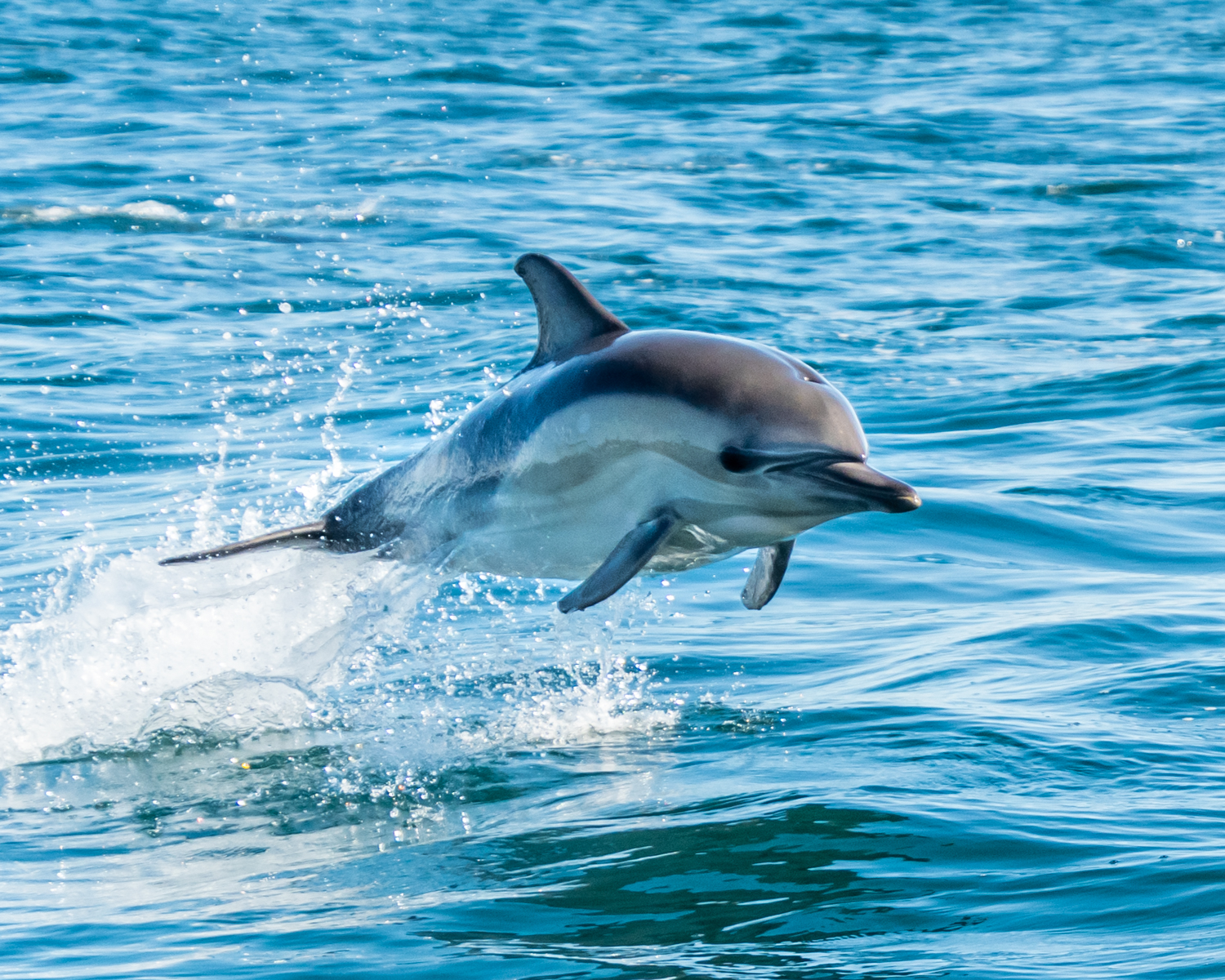Discover Rare Dolphin Facts That Make Them Unique Amongst Marine Animals
Wiki Article
Study the Sea: Fascinating Dolphin Facts for Ocean Lovers
The world of dolphins offers a remarkable crossway of intelligence, social behavior, and ecological importance. With about 37 species, these marine animals exhibit a series of remarkable attributes that not only astound ocean fanatics but likewise highlight their important duty in marine ecosystems. From their complex communication methods to their outstanding analytical capabilities, dolphins test our understanding of pet intelligence. The pushing demand for preservation efforts to secure these creatures and their habitats increases critical concerns regarding our responsibility towards the sea's occupants. What ramifications do these aspects hold for our interactions with these amazing beings?Dolphin Types Diversity
Diversity is a trademark of the dolphin family, including a vast array of types that exhibit distinct physical qualities, habits, and environments. The household Delphinidae, typically referred to as nautical dolphins, makes up roughly 37 types, each adjusted to certain environmental niches. For example, the bottlenose dolphin (Tursiops truncatus) is renowned for its intelligence and flexibility, growing in both open and coastal sea atmospheres.In comparison, the orca (Orcinus orca), often referred to as the awesome whale, is the largest member of the dolphin household and is defined by its striking black-and-white coloration. Orcas demonstrate complex social structures and searching techniques, showcasing the behavior variety within the family members. Various other varieties, such as the rewriter dolphin (Stenella longirostris), are kept in mind for their acrobatic displays and preference for warmer waters, highlighting the adaptability of dolphins to numerous marine ecosystems.
Furthermore, river dolphins, including the pink river dolphin (Inia geoffrensis), live in freshwater atmospheres, additionally illustrating the wide-ranging habitats that dolphins inhabit. Dolphin Facts. This incredible variety not just improves marine communities yet also stresses the significance of conservation initiatives to safeguard these remarkable animals and their atmospheres
Social Actions and Interaction
The detailed social behavior and communication methods of dolphins are essential elements of their presence, facilitating team communication and enhancing survival. These very smart aquatic mammals display complex social structures, typically creating capsules that can vary from a few people to over a hundred. Within these teams, dolphins involve in habits such as cooperative hunting, social play, and shared defense, which promote strong bonds among participants.Dolphins use an advanced range of articulations, including clicks, whistles, and body movement, to communicate details and express emotions. Their signature whistles function as distinct identifiers, comparable to names, enabling individuals to call out to one an additional. This vocal interaction is complemented by non-verbal signals, such as jumping, slapping the water, and integrated swimming, which additionally enhances their communications.

Unique Feeding Practices
Unique feeding behaviors identify dolphins, showcasing their adaptability and intelligence in different marine settings. These marine animals are known for their varied diet plans, which mostly consist of fish, squid, and crustaceans. Their searching techniques can differ substantially, often tailored to the details target and ecological problems.One noteworthy technique is participating hunting, where dolphins operate in teams to herd institutions of fish right into limited formations, making it much easier for individuals to capture their dish. This social behavior not only improves their feeding efficiency but likewise enhances social bonds within the husk. Additionally, dolphins have actually been observed using a strategy called "fish-whacking," where they utilize their tails to disorient or stun fish, assisting in simpler capture.
An additional remarkable feeding routine is echolocation, which allows dolphins to identify victim also in dirty waters. By releasing acoustic waves and interpreting the returning echoes, they can identify the dimension, shape, and area of their targets. This exceptional capacity underscores their flexibility in different environments, from shallow coastal locations to deeper nautical waters. Overall, the special feeding behaviors of dolphins highlight their function as proficient killers within the aquatic community, published here showing both intelligence and ingenuity.
Intelligence and Trouble Solving
Dolphins exhibit impressive cognitive capabilities that extend past their sophisticated discover this feeding strategies. Their knowledge appears in their analytic skills, social interactions, and ability for knowing. Research study has demonstrated that dolphins can utilize tools, such as making use of aquatic sponges to shield their rostrums while foraging on the seafloor. This behavior highlights their capacity to adjust their environment successfully and adapt methods to improve survival.Furthermore, dolphins display sophisticated communication skills, using an intricate system of clicks, whistles, and body language. Dolphin Facts. This communication is crucial for coordinating group activities, such as searching and socializing, highlighting their capability to function collectively towards an usual goal. Their capacity to understand abstract principles, including self-recognition in mirrors, better highlights their cognitive sophistication
In controlled researches, dolphins have shown an ability to address challenges and execute jobs that require both memory and essential reasoning. These interactions show not only intelligence yet likewise a readiness to involve with their setting in unique ways. Generally, the cognitive prowess of dolphins puts them amongst the most intelligent varieties in the world, cultivating a much deeper appreciation for their function in marine ecological communities.
Preservation and Environmental Impact
Conservation initiatives focused on protecting marine ecosystems are critical for maintaining dolphin populaces and their environments. Dolphins are highly delicate to environmental adjustments, and their survival is intricately connected to the health and wellness of oceanic ecological communities. Overfishing, air pollution, and environment change present significant hazards to both dolphins and their environments.Overfishing interrupts the food web, causing a decrease in victim species vital for dolphin survival. Contaminants such as chemicals and plastics collect in marine environments, jeopardizing dolphins with ingestion and bioaccumulation. Enhanced water temperatures and ocean acidification, effects of environment adjustment, further endanger the delicate equilibrium of try this web-site marine communities, influencing dolphin reproduction and migratory patterns.
Conservation campaigns, consisting of the establishment of marine safeguarded locations (MPAs), play a vital duty in guarding these smart creatures. MPAs aid reduce human impact, allowing ecosystems to recuperate and thrive. Public awareness projects and area interaction are also vital, cultivating a society of stewardship towards aquatic life. By prioritizing preservation initiatives, we can ensure that future generations appreciate the charm and vigor of dolphins and the seas they inhabit. Securing aquatic environments is not almost conserving dolphins; it has to do with preserving the complex internet of life that maintains all of us.
Verdict
Dolphins exemplify the intricacy and splendor of marine life via their diverse varieties, intricate social structures, and progressed cognitive capabilities. As crucial components of aquatic ecosystems, dolphins emphasize the need of continuous preservation efforts to safeguard their habitats.Various other varieties, such as the spinner dolphin (Stenella longirostris), are noted for their acrobatic display screens and choice for warmer waters, highlighting the flexibility of dolphins to different aquatic communities.
On the whole, the unique feeding routines of dolphins highlight their duty as skilled killers within the aquatic community, showing both knowledge and resourcefulness.
In general, the cognitive prowess of dolphins positions them amongst the most smart species on the planet, fostering a much deeper appreciation for their function in marine environments.

Report this wiki page